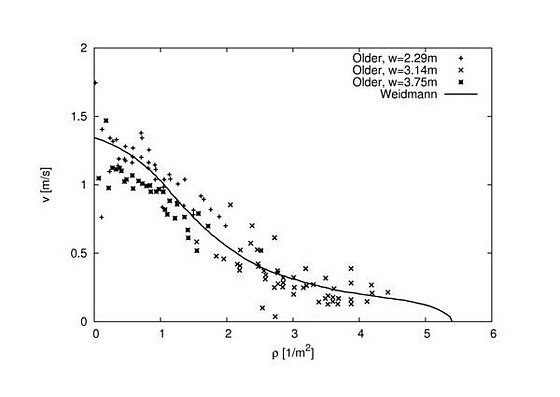Setup
Flow direction: Bidirectional
Boundary condition: Open
Places of research: Shopping streets
- Oxford Street, London (w = 2.29 m)
- Oxford Street, London (w = 3.75 m)
- High Street, Slough (w = 3.14 m)
Data collection:
- A photographic method was used to record the basic data on pedestrian speed, density and flow.
- A cine camera was placed in a suitable position on a roof top, to enable a bird´s eye view of a length of pavement to be photographed.
- A film speed of approximately 10 frames/sec was used - the exact rate being checked by photographing a stopwatch, at suitable periods throughout the observations.
- From the films so obtained the times to traverse a given length of footway were found far a sample of pedestrians, first in term of number of film frames and then, by conversion, in seconds.
- The density of pedestrians was obtained when the moving pedestrian was at the centre of the section by counting the number of pedestrians within the observed limits and dividing by the area of the footway.
- Pedestrian flow, the total of flows in both directions, was easily determined from the film by counting the numbers passing a point at the centre of the observed section.
Fundamental Diagram
Data
The data can be found in a zip-file.
References
S.J. Older
Movement of Pedestrians on Footways in Shopping Streets
Traffic Engineering & Control, 1968

